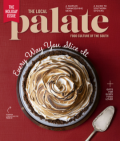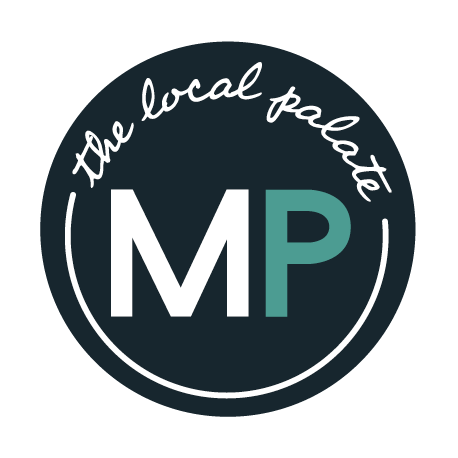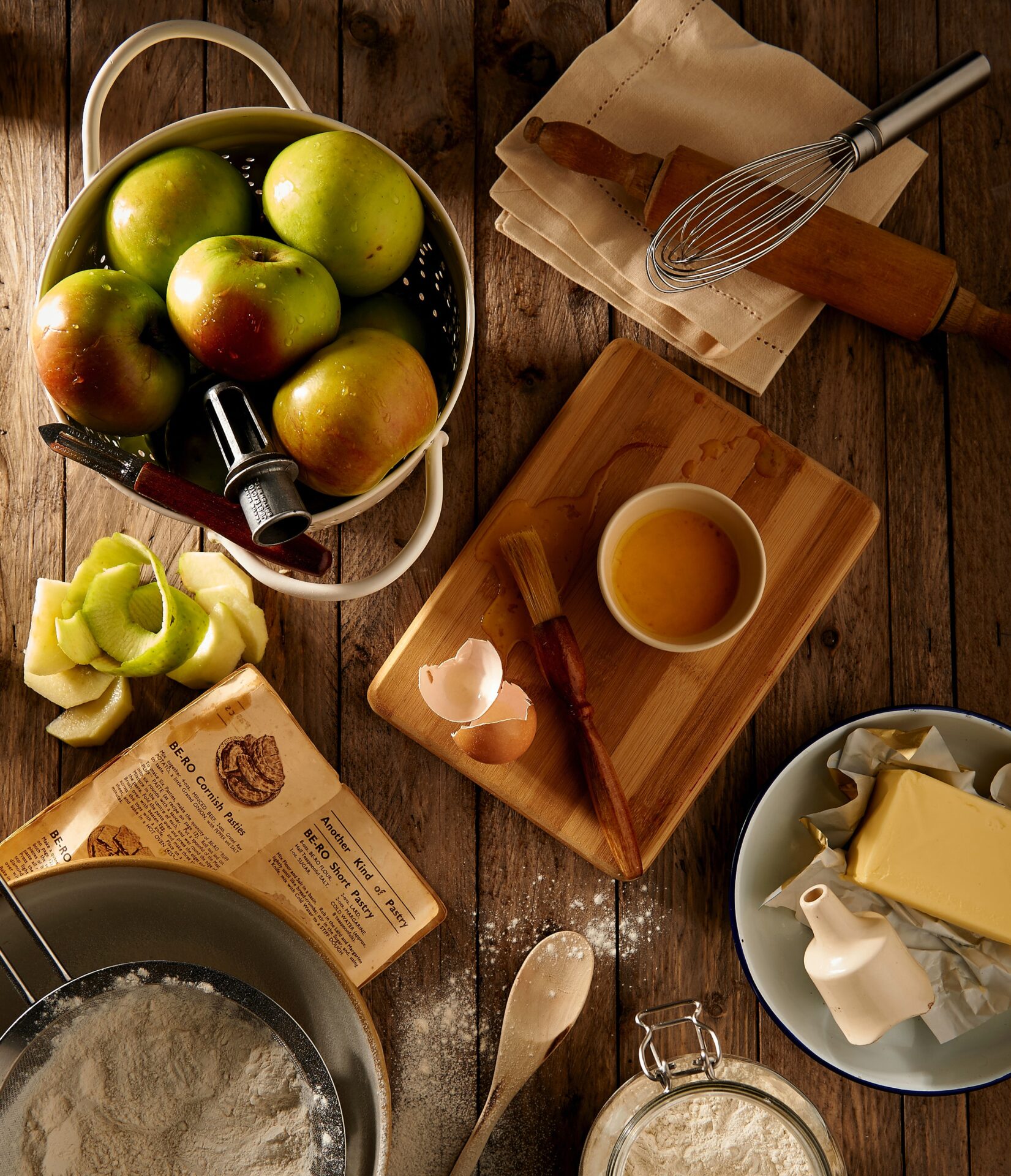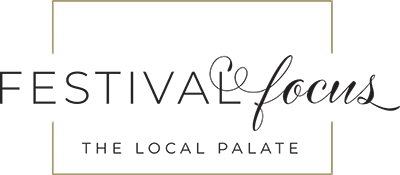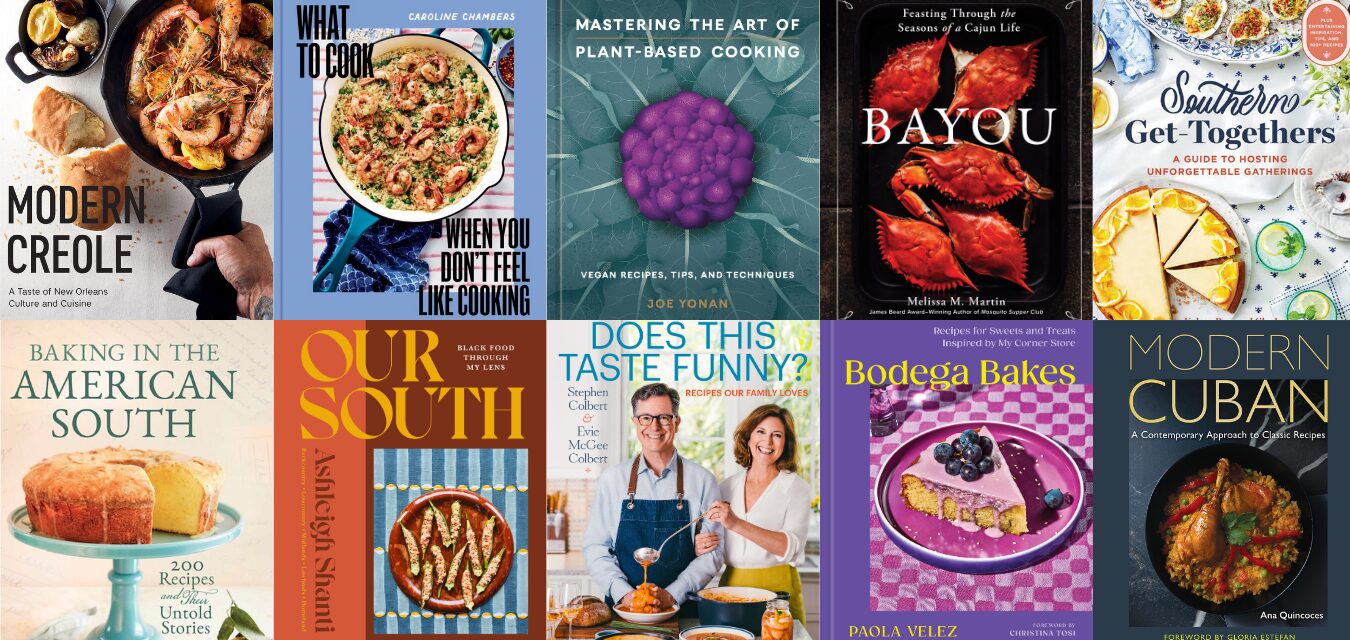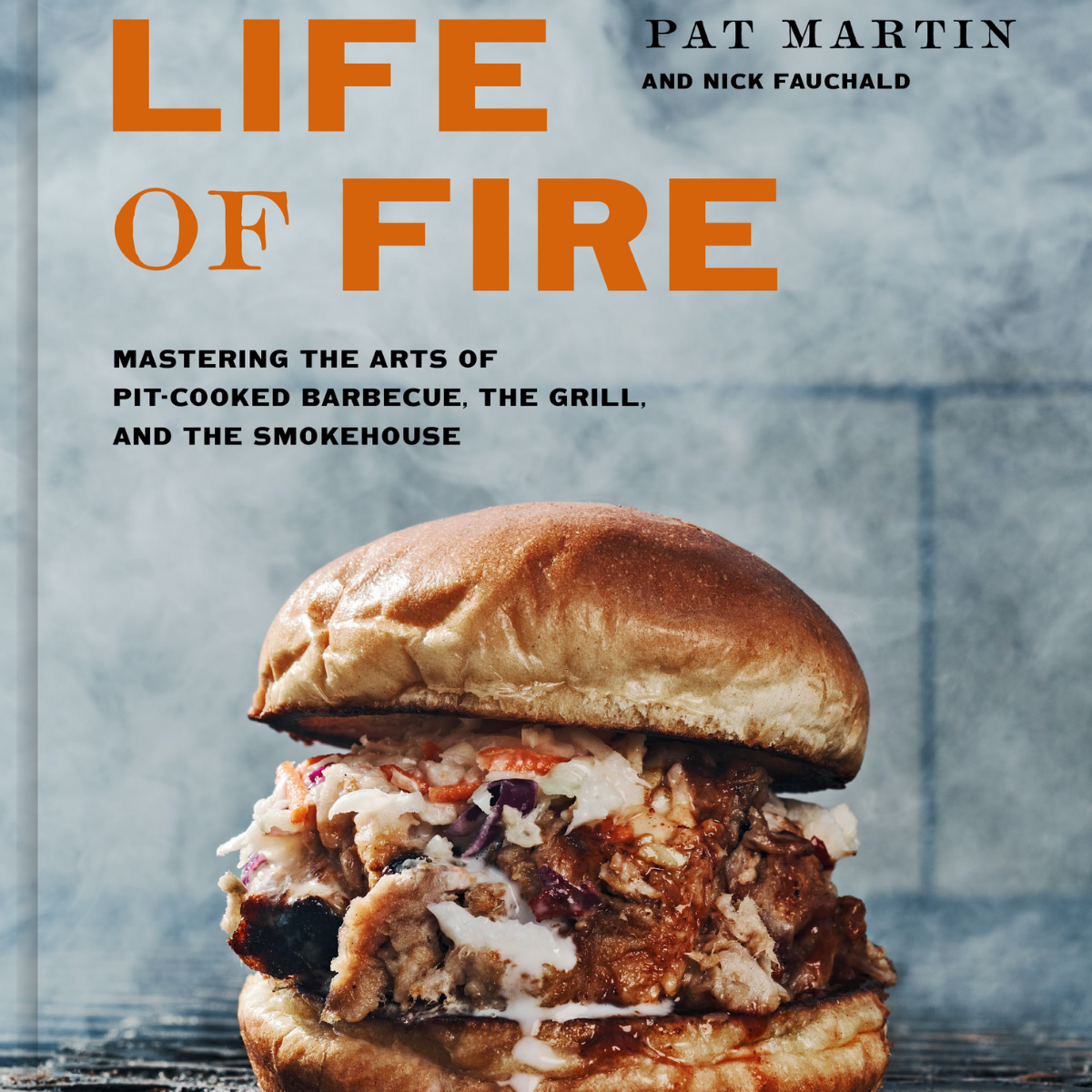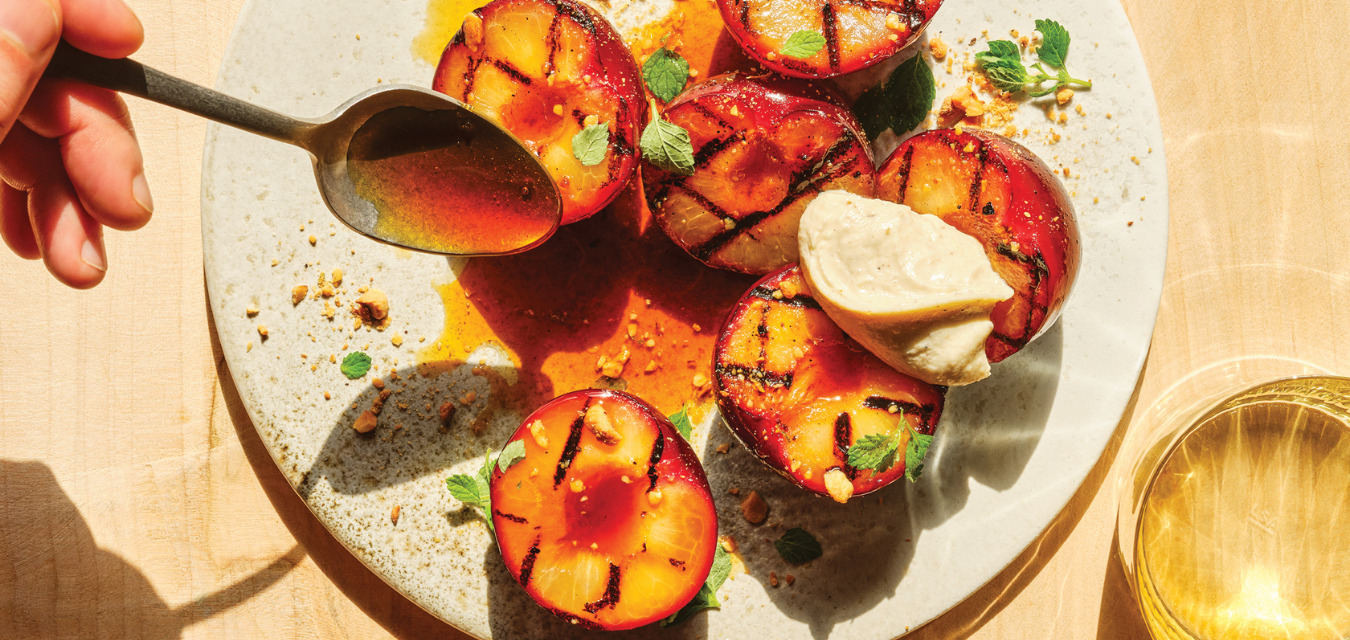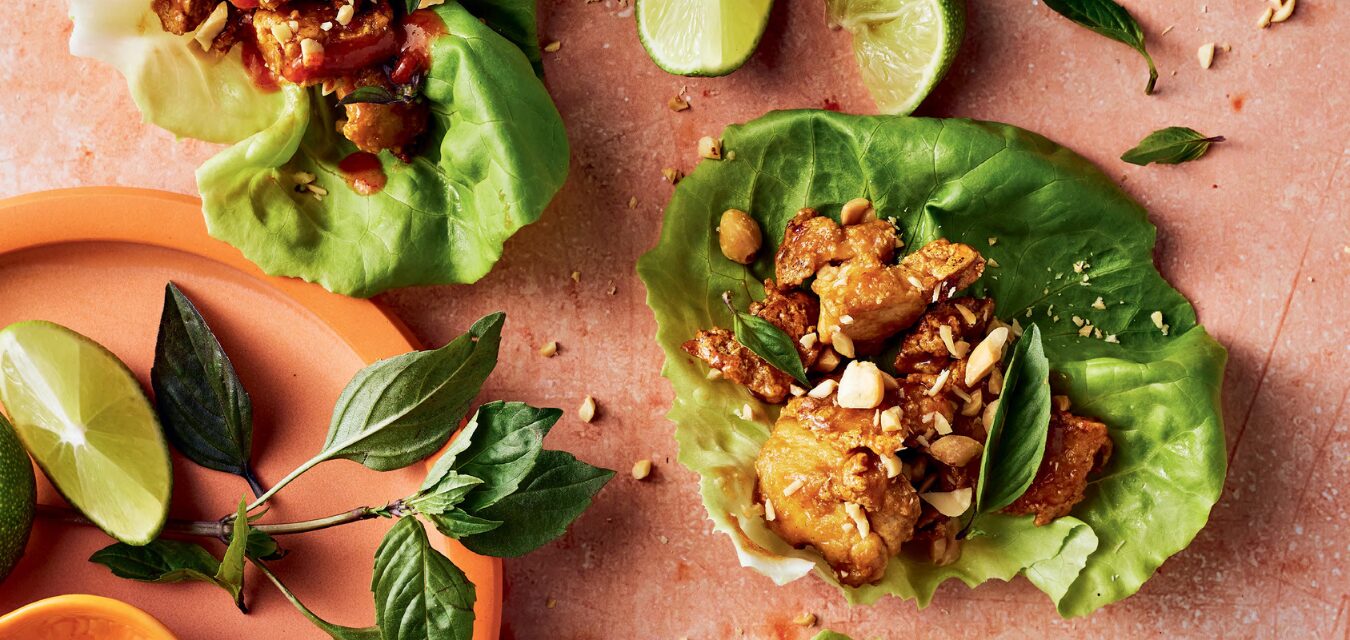It’s been a whopper of a season for Southern cookbook releases—and many of them are excellent reads. We sifted through the pile and found several essential tomes, new guides to entertaining, a handful of well-researched books with a micro-regional focus, and one really good laugh. If you’re looking to stock your cookbook shelves, let our list of favorites be the ones to bookmark.
The Best Southern Cookbooks Releasing This Fall
Does This Taste Funny? Recipes Our Family Loves
by Stephen Colbert and Evie McGee-Colbert | Celadon
Did you know one of the kings of late-night comedy prefers cornbread over biscuits? And he occasionally eats leftover fig tarts for breakfast. Fans of Stephen Colbert will appreciate the unfettered access shared though his cookbook, written with his wife Evie; but even if you don’t know him well, this cookbook is brimming with Southern charm. Both Colberts grew up in Charleston, blocks from each other, and spent the pandemic taping his Late Night show in their Charleston home, with their three kids, also homebound, jumping in to help. The book was born from those moments, as well as a true love of family cooking—and Stephen clearly knows his way around a kitchen (he’s in charge of the annual holiday beef Wellington). Evie’s Charleston roots show up in her use of the word receipts instead of recipes, as in the historic Charleston Receipts book. Their cookbook is written from both of their perspectives, with the intro and their headnotes being a giggle-inducing back-and-forth about cooking, family, home life, and traditions. The recipes are like a love song to the Lowcountry and their lives there, with plenty of friends and relatives making appearances throughout; they’re manageable, too, since the couple had an assist from a niece-slash-recipe tester and include thoughtful commentary in the instructions, like breaking up the lumps in a chess pie filling because “no one likes a lumpy chess pie.” (Truth.) Bonus for Charleston fans: the photography shows the couple enjoying a few local spots like Abundant Seafood.
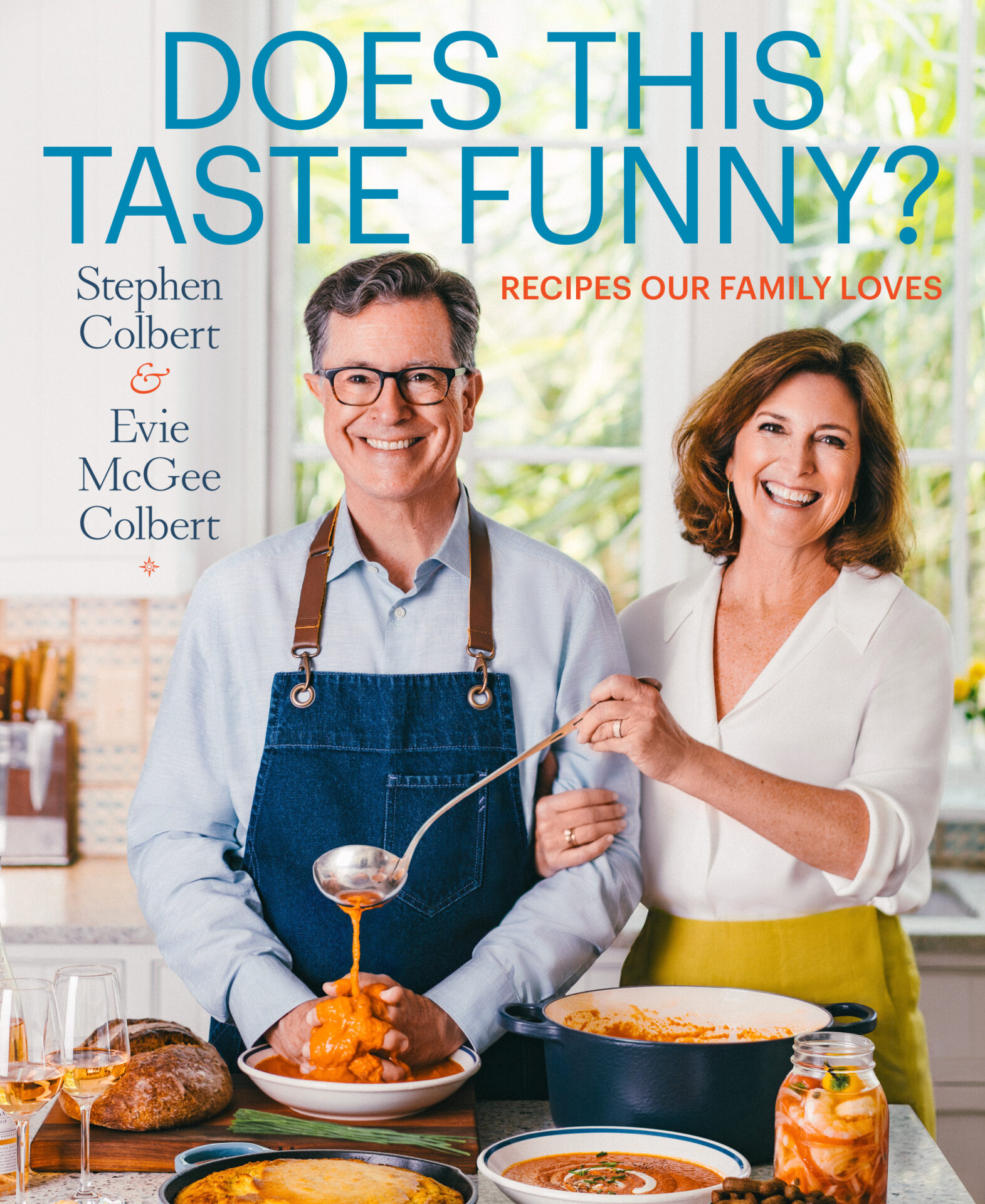
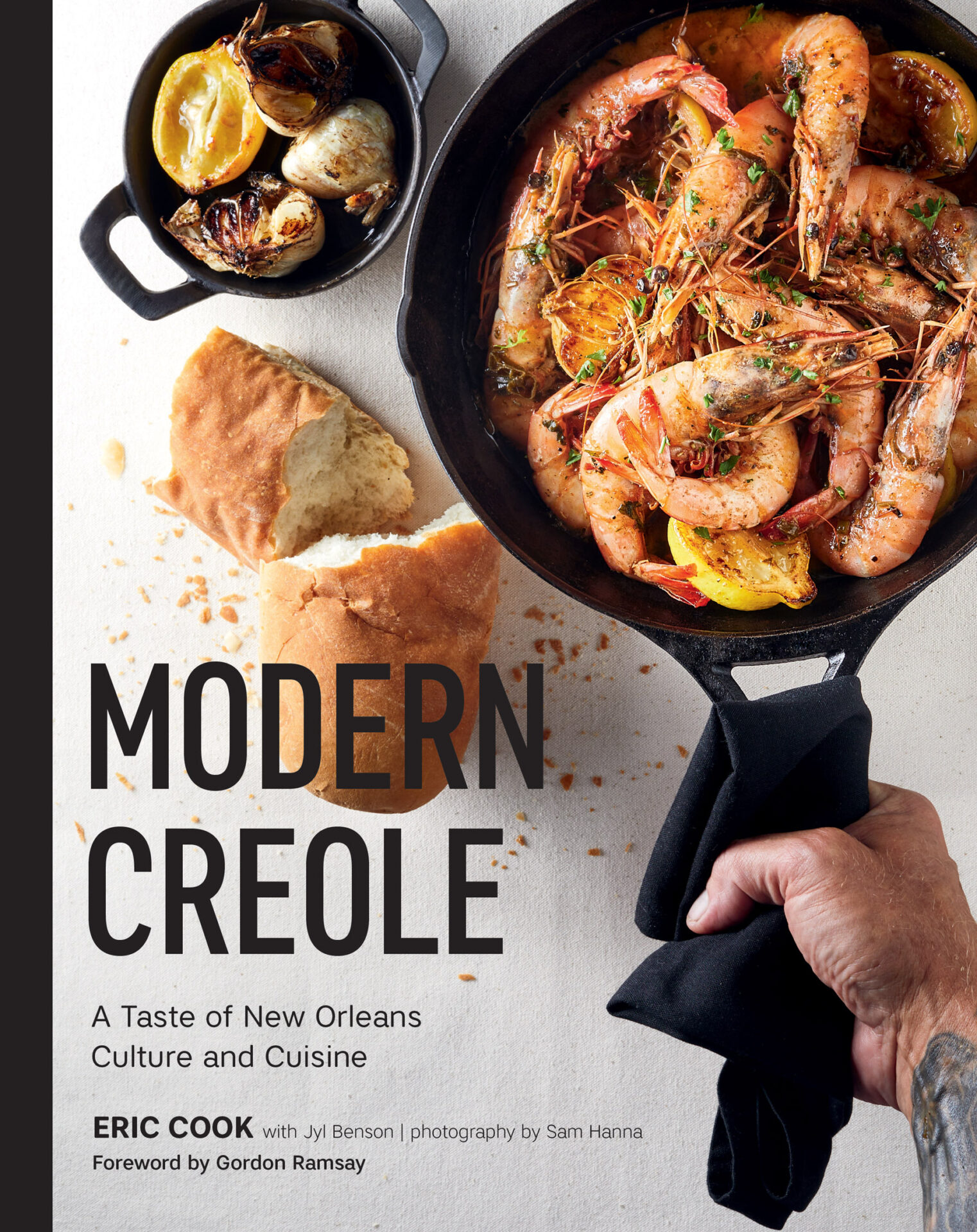
Modern Creole: A Taste of New Orleans Culture and Cuisine
By Eric Cook | Gibbs Smith
Marine-turned-chef Eric Cook is a native Louisianan who believes that creole cuisine is for everyone, everywhere. In his first book, the chef of Gris-Gris and Saint John in New Orleans, maps out the many ways people landing in Louisiana have thrown their own ingredients into the pot, which is the basis of creole cuisine. Today’s creole dishes are different from yesterday’s for that very reason. Having worked at stalwarts like Brennan’s and Commander’s Palace, not to mention eating the home-cooked meals served in and around St. Bernard Parish, Cook’s techniques are tried and true, with the added bonus of being modern and approachable. You’ll immediately want to dig into the crabmeat ravigote salad (a tribute to Brennan’s longtime chef Michael Roussel), or the mirliton slaw with caviar ranch. Cook also grew up hunting and fishing in the area’s swamps and bayous so dishes like wild duck cassoulet pepper the list. He offers up two different styles of gumbo, hot shrimp remoulade with fried green tomatoes and chow chow, and oysters etouffee—all of which weave together to create a sturdy foundation of creole know-how that’s of the now. You’ll find the classics, but some of them shown in a whole new light.
What to make: Sticky Bun Bread Pudding
Southern Get-Togethers: A Guide to Hosting Unforgettable Gatherings
By Kelsey Barnard Clark | Chronicle Books
Back in the early aughts, entertaining books were all the rage, with Martha Stewart leading the charge. But over the years, as cookbook trends have ebbed, fewer entertaining books pepper the landscape in favor of general home cooking or chef-driven themes. Kelsey Barnard Clark has entered the chat, handing us a cheat sheet for having friends over for dinner again. A longtime caterer and Top Chef winner, Clark owns a more modern approach to entertaining that still nods to formality. She’s a planner (like me!) and loves charts (ditto!) and her chart for how much food and booze to serve based on your number of guests is absolutely worth the price of admission. She talks about the old-school rules of entertaining and then debunks about half of them. (You don’t need to hand-press the powder room towels—but you do need candles and music.) Throw in her tips on floral arranging, table setting, and menu planning and you’ve got a confidence-building guide to your next dinner party. As for recipes, she organizes those based on how people actually entertain these days: all-day bashes (tailgates, Lowcountry boils), potlucks and supper clubs, and formal affairs, with multiple styles of menus for each (including beverages in some cases). Whether you’re always having friends over or about to send out your first invite, let KBC be your coach.
What to Make: Hot Honey Chicken; Quick Pickled Green Tomatoes


What to Cook When You Don’t Feel Like Cooking
By Caroline Chambers | Union Square & Co.
Winston Salem, North Carolina-native Caroline Chambers has built a massive following through her wildly popular Substack of the same name. Our digital editor Amber Chase dug into Chambers’ book to cook through a few recipes, all while an active two-year-old and piles of laundry tried to distract her. After testing a few recipes, including a mussels dish, she declared, “watching my two-year-old slurp a mussel and sop up the sauce with her spelt rye might become a core memory for me.” Read Chase’s full report.
What to Make: I Promise You Can Cook Mussels; Crispy Miso Lime Tofu
Baking in the American South: 200 Recipes and Their Untold Stories
By Anne Byrn | Harper Celebrate
In 2021, when Anne Byrn was on tour to promote her book A New Take on Cake, an audience member asked her what was special about Southern baking. To her consternation, Byrn, a lifelong Southerner, couldn’t come up with a good answer. “I hemmed and hawed,” she says, “and looked to the audience like a pitiful puppy!” Byrn’s new cookbook, Baking in the American South: 200 Recipes and Their Untold Stories, is the result of a years-long journey to respond to that simple but provocative question. “I have a better answer now, a bigger answer,” she says. “What I would say now to the woman from Ohio is that the South had the first and still has the finest style of baking in America, without a doubt.” That unique style developed over the long, complicated history of the South. In the antebellum period, enslaved women introduced unique flavors, ingredients, and practices not found elsewhere in the United States. For nearly a century after the Civil War, the rural nature of the region meant that most baking happened in the home. Those home bakers, both African American and white, followed the recipes of their mothers and grandmothers but often substituted with what was affordable and accessible. “Southerners, especially during Reconstruction and the Depression—they were born substituting!” Byrn says. Baking in the American South honors Southern traditions of baking while also showing the ways those traditions have evolved over time to welcome new people and new styles of baking redefining the idea of Southern cuisine. —Emily D. Crews
What to Make: Craig Claiborne’s Hushpuppies
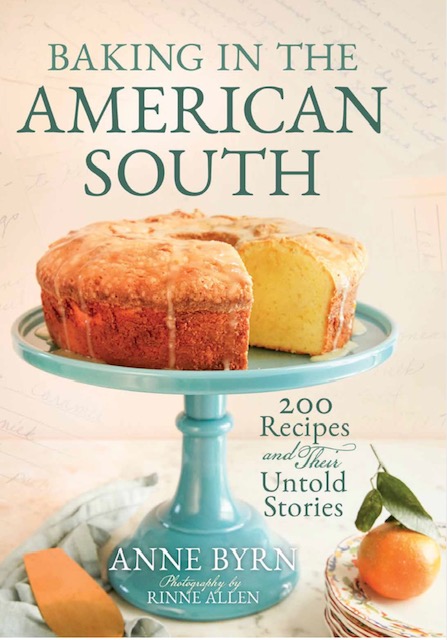

Bayou: Feasting Through the Seasons of a Cajun Life
By Melissa Martin | Artisan
Melissa Martin has spent her life on a Louisiana bayou, and has a fierce passion for preserving its traditions. She started recording her love in her first book, Mosquito Supper Club, named for her pop-up and then restaurant bearing the same name. In this book, she continues to hold a torch for Cajun cooking and bayou traditions, writing, “When I peer into the future, I know that cooking this food and sharing these recipes are acts of radical historical preservation. I am a daughter of the bayou. If not me, who?” Here, she celebrates the frugality of the region, raising the banner for peasant cuisines “created by people making the most of their terrain, ingredients, and climate,” and championing previous generations for providing a pile of traditions worth preserving. Arranged more by emotion than meal, Martin categorizes recipes under Abundance, Simplicity, Warmth, Grace, Love, and more. It leans into the seasons and especially the holidays that mark the calendar and build community within the 20-mile zone of bayous she calls home. There are favorites like New Orleans-style barbecue shrimp and king cake, plus regional specialities, including fried fish collars, shrimp boulettes, and Happy New Year cabbage rolls. Under Tradition, she gets into hunting season and boucheries, with recipes for cracklins and boudin. In a section called Love, there are holiday dishes from turtle soup to fried turkey. Tying the book together are stunning photos from fellow Louisianan Denny Culbert who marries the visuals of the table with those from the field, showing a rarely-seen blend of the region’s ruggedness and grace.
What to Make: Crawfish Fettuccine
Our South: Black Food Through My Lens
By Ashleigh Shanti | Union Square & Co.
Chef Ashleigh Shanti, who opened Good Hot Fish in Asheville in January 2024, says she has always had deep respect for a certain type of cookbook. “I loved the ones where I found place, such as Southern and Black cookbooks. That was especially true of ones written by Edna Lewis.” So, when Shanti—a finalist for the 2020 James Beard Rising Star Chef of the Year—committed to writing her own cookbook, she went to the place where it began for her. “I essentially moved back to my childhood bedroom,” she says. “I moved back in with my parents in Virginia Beach, where I grew up, in the house with the kitchen where I baked my first cornbread and wrote my entire proposal there. It needed to happen there.” Our South travels through and mines recipes from five regions—Backcountry, Lowlands, Midlands, Lowcountry, and Homeland. The deeply personal introduction is memoir and professional resume, family history and history lesson, geography, culture, and heritage, written in a strong voice woven into every story of every distinctive dish. —Kay West
What to make: Cabbage and Mushroom Pancakes
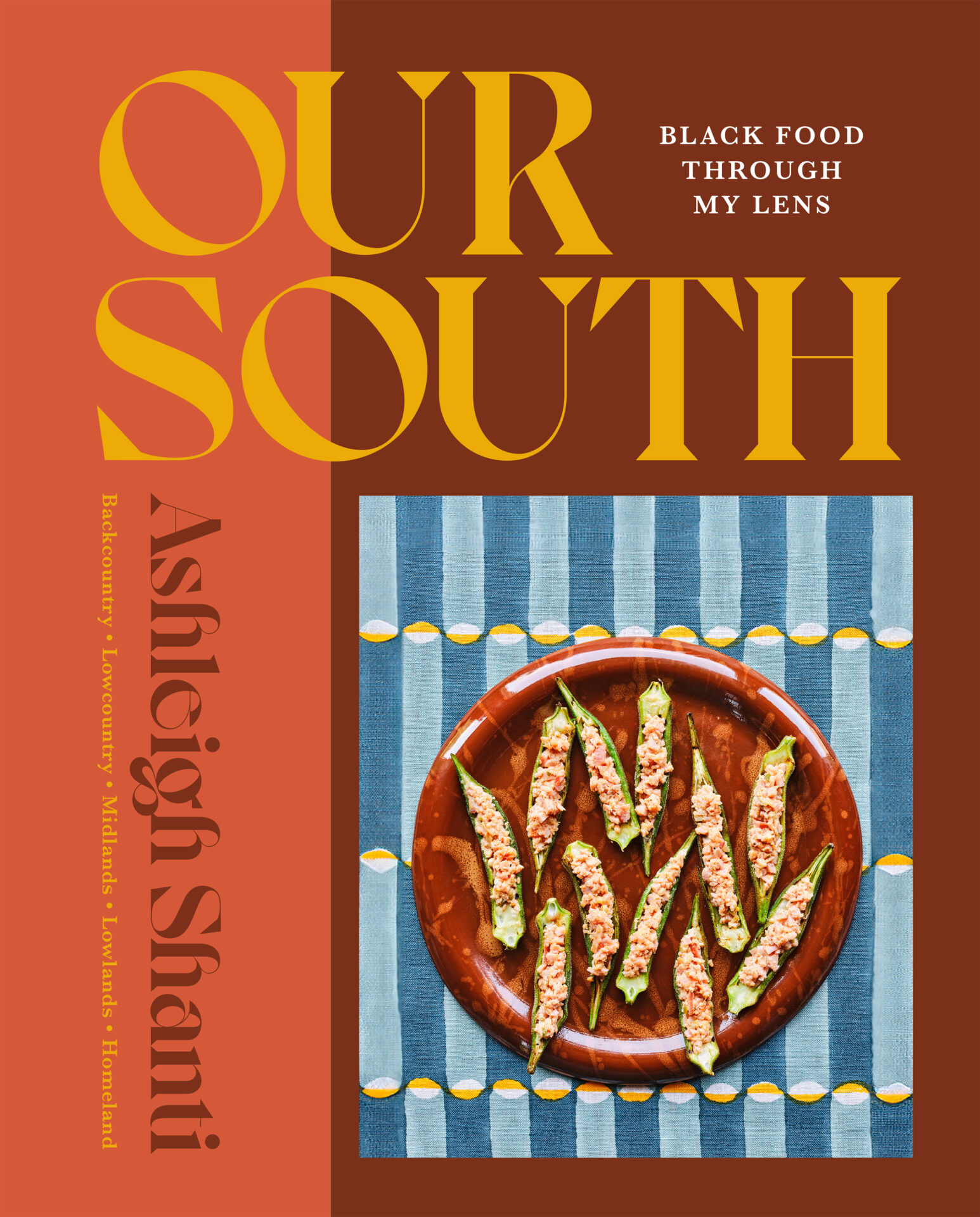
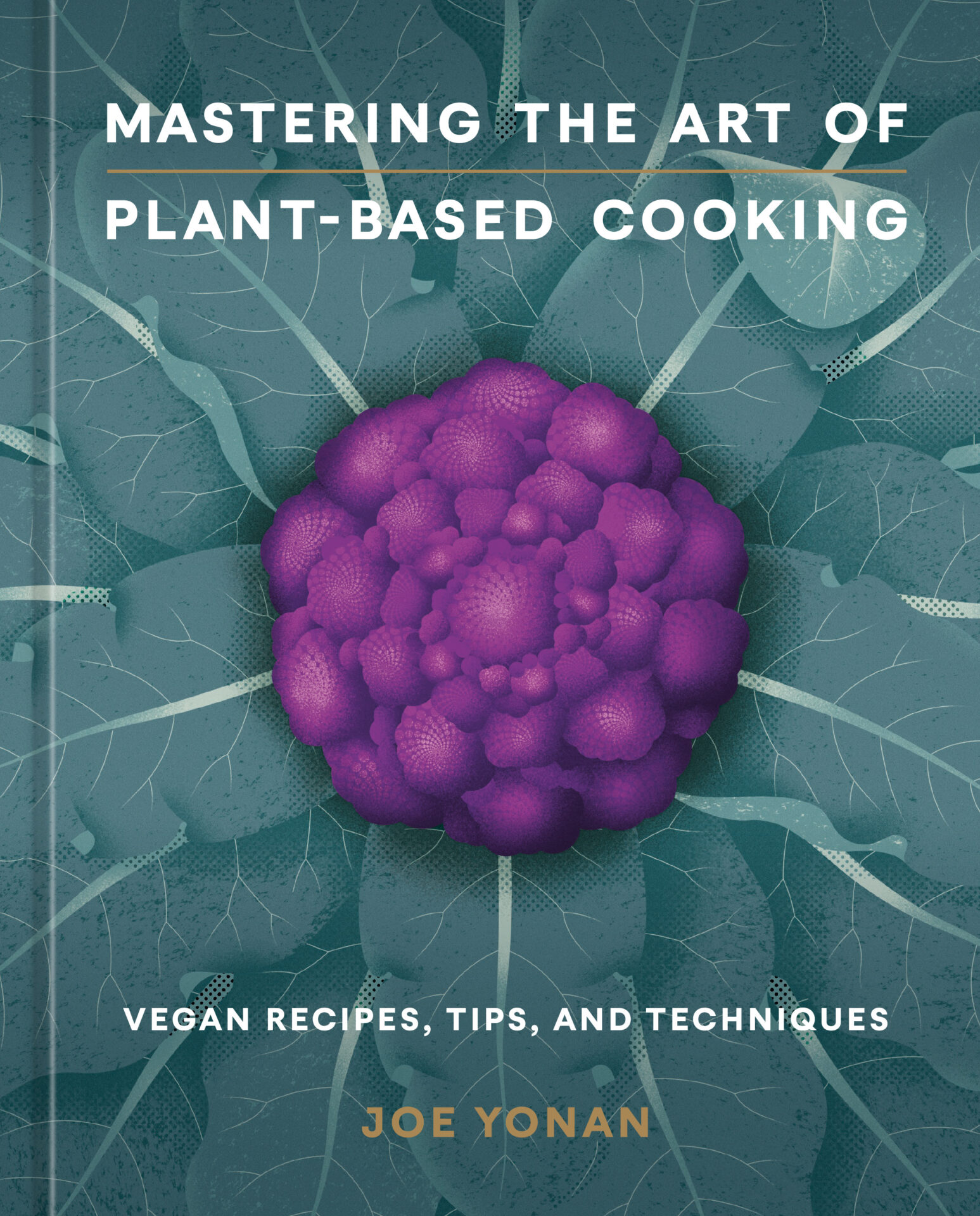
Mastering the Art of Plant-Based Cooking: Vegan Recipes, Tips, and Techniques
By Joe Yonan | Ten Speed Press
In this comprehensive guide to vegan cooking, Joe Yonan works to “codify plant-based cooking as not a lifestyle, not a philosophy, but… a cuisine.” And like any other “mastering” title, this one is full of building blocks for success—starting with a chapter of just that: nut and oat milks, butters, cheeses, yogurts, tofu, and more, that once learned, can be applied and utilized in the hundreds of recipes that follow. (Yes, plant-based versions of these are available at stores, but he’s encouraging you to try it yourself to experience the freshness and flavor.) Yonan is the food editor of The Washington Post as well as the author of several other cookbooks, including Cool Beans, and “came out” as a vegan more than a decade ago. This book will speak to anyone who wants to add more plant-based meals to their lives, as well as those who have fully adopted the lifestyle. Inside is a vast range of recipes that will be exciting to anyone who appreciates flavor-packed dishes, like chile-glazed sweet potato and tempeh hash, trumpet mushrooms au Poivre, and okonomiyaki sweet potato fries. More than an essential vegan cookbook, it’s essential, period, for its collection of irresistible recipes and expert tips for vegetable cooking. (Use a microwave to more easily shuck corn kernels from the cob; steam your eggplant; etc.) A number of contributors add their recipes and essays to the book like Alicia Kennedy on becoming a vegan baker and Julia Skinner on lacto-fermentation. From salads to casseroles to savory baking and more, Yonan pulls inspiration from the myriad cuisines that have given veganism its roots, including cultures from Asia to the South and Indigenous Americas and beyond.
What to Make: The Ultimate Real-Veggie Veggie Burgers
Bodega Bakes: Recipes for Sweets and Treats Inspired by My Corner Store
By Paola Velez | Union Square & Co.
I don’t normally start by describing a book’s design, but it’s not often that cookbook design so specifically radiates an author’s technicolor view of the world. Bodega Bakes has a vivid purple and yellow cover, matching the concord grape-glazed cake in the image. The pictures inside are just as lively, and ombre is a vibe throughout. Just as author Paola Velez paints her pastries with the flavors of the Caribbean, the cookbook design and photography team have fully captured her personality. Velez is a first-generation Dominican American raised in the Bronx, where she spent a lot of time at the corner bodega getting to know Latin and Caribbean pastries. She later went to culinary school, worked in her family’s restaurants, and eventually got into pastry thanks to her husband, Hector. (She wanted a daytime schedule so she could see him at night; YouTube gave her the master classes she needed to become an expert). Playing off a range of Americana favorites, she started adding flavorings and techniques from her various cultures, creating an entirely unique point of view through pastries. Witness her zucchini sticky buns, nasturtium coconut cream pie, caipirinha marshmallows, and “thick’ems,” her trademark gooey-centered cookies. Sitting with this book is like sitting with her as she tells it straight—Vanilla extract is sometimes better than real vanilla! If you think her donuts are too big, then maybe she can’t be your friend! And the recipes are truly do-able. As she points out, “I’m very serious when I say that I will make sure that anyone who tries to cook from this book will be successful… I’m here to hold your hand.”
What to Make: Plantain Tarte Tatin
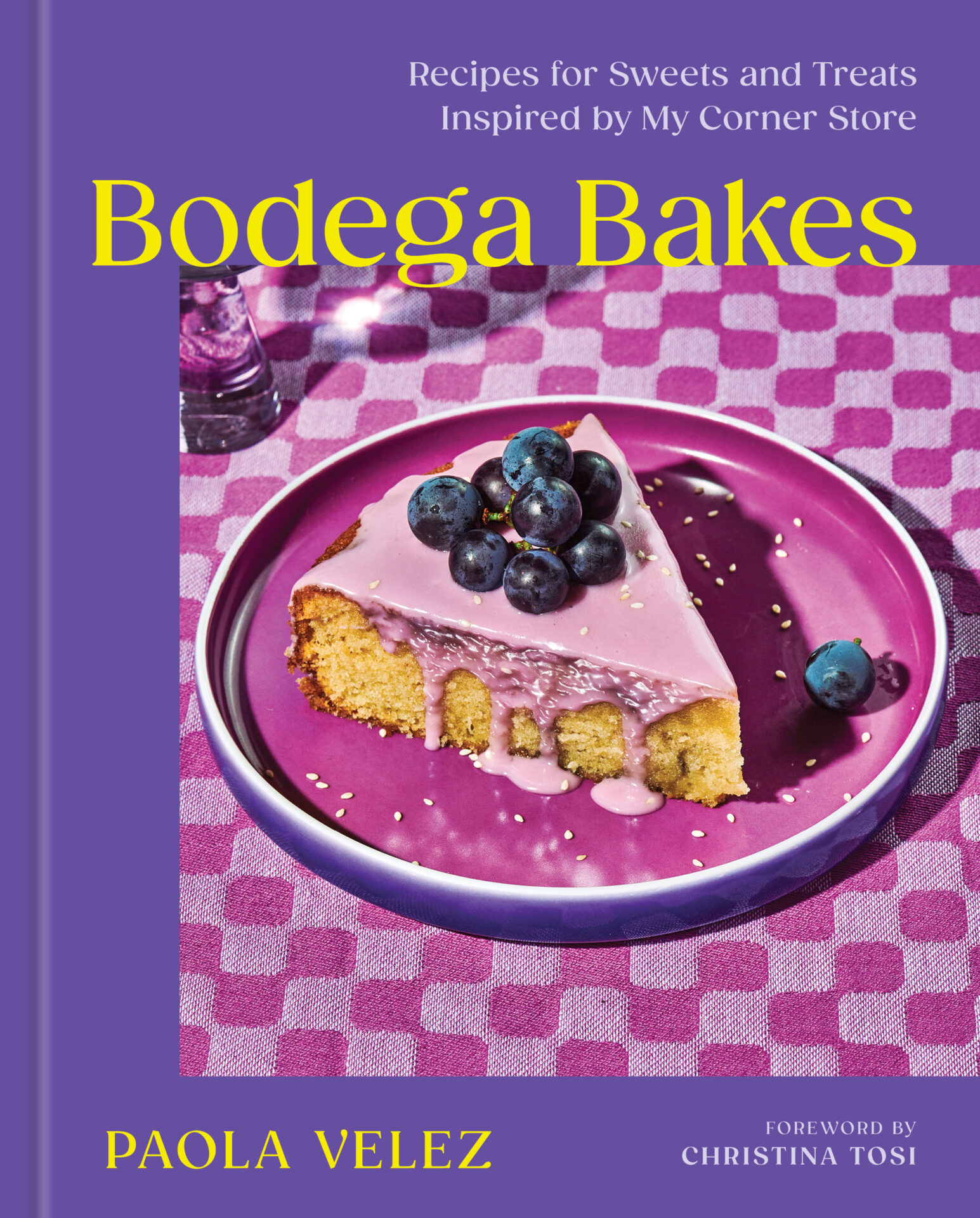
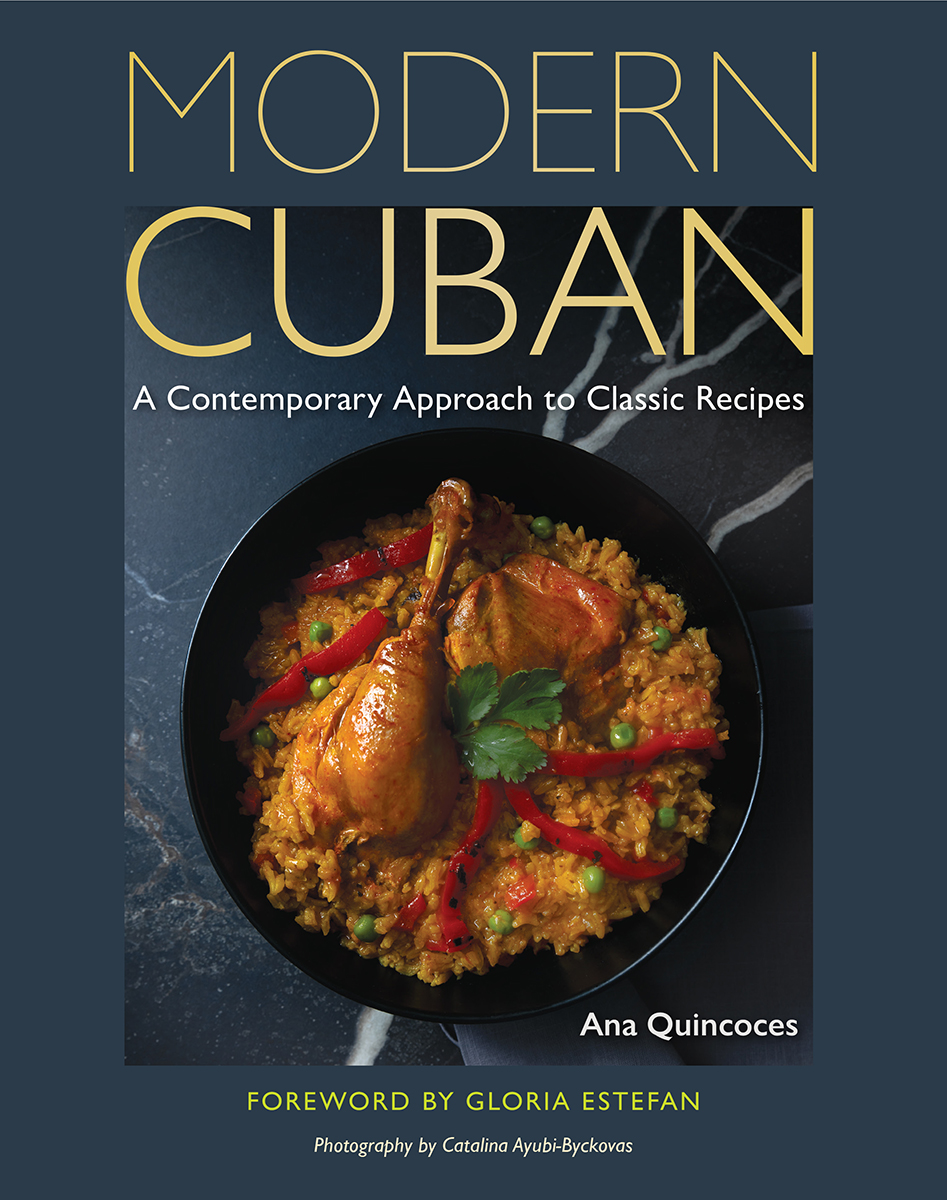
Modern Cuban: A Contemporary Approach to Classic Recipes
By Ana Quincoces | University Press of Florida
As a first-generation Cuban American, Ana Quincoces has a unique perspective on a country that is difficult to define and understand—her parents are a direct link to a time when Cuba was an epicenter of glamor and cool, a time when it was accessible to more people. Born and raised in Miami, Quincoces also has the perspective of how Cuban cuisine helped build a community of immigrants who cooked and ate their home country’s foods in order to stay connected to it. The foundation for many Cuban dishes are sofrito, a combination of onion, garlic, bell pepper, tomato sauce, and herbs, and mojo criollo, a garlicky, tangy orange juice-based sauce. Those foundations, once perfected, can help launch lovers of Cuban cuisine into more modern territory, Quincoces explains. While many dishes in the cannon are already vegetarian or vegan, her recipes help today’s cook drill down even further with gluten-free and keto-friendly call outs. She covers a lot of ground, from appetizers and soups and stews to “all things rice” and main dishes, delivering many classics like empanadas chorizo, plantain soup, a cuban sandwich, and moros (black beans and rice). It’s dishes like her jackfruit ropa vieja that bring the book’s theme tightly into play—because the classics can always be updated.
What to Make: Jackfruit Ropa Vieja
Keep Reading
Cookbook Club
Eight New Cookbooks to Kick Off Summer
It’s been a big season for new cookbooks, and there’s lots to learn about barbecue, of course, but also pizza, Sunday cooking, and North Carolina’s foodways.
Cookbook Club
Bookshelf: Thoughtful Cooking
William Dissen introduces Thoughtful Cooking, with recipes cultivated by sustainable agriculture, foraging, and cooking through the seasons.
Cookbook Club
Cookbook Review: What To Cook When You Don’t Feel Like Cooking
Caro Chambers’ What To Cook When You Don’t Feel Like Cooking gives recipes by time stamp, a true test for the exhausted weeknight chef.
share
trending content
-
Our Top 10 Stories of 2025
-
ShellBound: An Anthology of Southern Oyster Culture | Episode 2: North Carolina
by Maggie Ward -
Community Meets Cuisine in Columbia, South Carolina
by TLP's Partners -
Get To Know Spartanburg, South Carolina
-
Odessa Shines Bright This Season
by TLP's Partners
